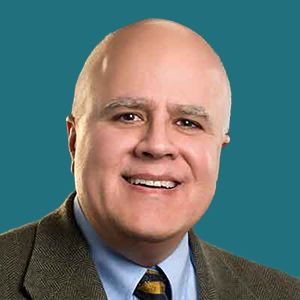Potentially Curative Treatment Options Are Providing Hope for Patients With Sickle Cell Disease
Haydar Frangoul, MD, discussed advantages and disadvantages of haploidentical bone marrow transplant and the 2 new gene therapies for SCD.
Haydar Frangoul, MD
Credit: Sarah Cannon

In decades past, matched sibling stem cell transplant was the only potentially curative treatment option for patients with sickle cell disease (SCD). Nowadays though, new potentially curative options are available. These include haploidentical bone marrow transplant (haplo) and 2 gene therapy options: the gene-editing therapy exagamglogene autotemcel (exa-cel, Vertex Pharmaceuticals and CRISPR Therapeutics) and the gene-addition therapy lovotibeglogene autotemcel (lovo-cel, bluebird bio).
Haydar Frangoul, MD, the medical director of pediatric hematology/oncology at Sarah Cannon Research Institute and Pediatric Transplant and Cellular Therapy Program at TriStar Centennial, spoke about the advantages and disadvantages of these new curative treatment options in a presentation at the 2024 Tandem Meetings |Transplantation & Cellular Therapy Meetings of ASTCT and CIBMTR, held in San Antonio, Texas, February 21-24, 2024. Shortly before he gave his talk, CGTLive® sat down with Frangoul to learn more about his thoughts on this topic and what he sees as the main takeaways for the healthcare community.
CGTLive: Can you give some background information about your upcoming presentation?
Haydar Frangoul, MD: We were invited by the Advanced Practice Provider Track to talk about the differences between haplo and gene therapy. I have done a lot of work in the gene therapy field and we are trying to highlight the differences—which indications are more suitable for haplo versus gene therapy.
What are the key points that you will present during your talk?
What I'm going to be presenting today is the available clinical data from some of the trials that are ongoing and from the trials for the 2 approved products for SCD, the bluebird bio and the Vertex products, that received the approval on December 8, 2023. We'll present this data and show the efficacy and safety data and then talk about potential limitations of gene therapy for SCD.
Can you discuss that data a bit now?
The data actually shows very good efficacy and safety for patients with SCD. Both the gene-addition therapy [lovo-cel] and gene-editing therapy [exa-cel], show very promising data. The efficacy for the gene-editing therapy, which I'm heavily involved in, is more than 90% of the patients were vaso-occlusive crisis (VOC)-free after the therapy and 100% of the patients remain hospital-free after this, which is quite impressive for this type of therapy. There was also improvement in the quality of life of patients with SCD after these therapies. So it's not only prevented them from having pain crises, it's also improved their day-to-day quality of life.
What are the big-picture implications that doctors and the healthcare community should take away from this?
Well, I am very hopeful that now individuals with SCD have options. Think about it: 10 years ago, we only had matched-sibling transplant to be a cure for individuals with SCD. Now, the haplo data that Dr. Kassim is going to present shows good promise and the gene therapy data we are going to present is extremely encouraging. We are very hopeful that individuals with SCD have many options to choose from to reach a cure for their disease.
What are some of the challenges that still remain in this field right now?
For haplo, for example, there is the risk of graft versus host disease, rejection, and infections afterwards. For the gene therapy field on the other hand, for example, it hasn't been tried extensively in patients with stroke. We don't know if patients with stroke and SCD can benefit from gene therapies. There is a lot of work to be done. Additionally, the approach using gene therapy uses high-dose busulfan, which can cause side effects, including long term infertility, which is a huge limitation to these therapies; although, we encourage individuals with SCD to undergo fertility preservation so they don't have to choose between fertility and a cure. I am hopeful that now there is hope for individuals with SCD if they pursue a potential curative therapy.
Are there any areas of interest for future research in this space?
What I would like to see is more data and more follow-up. Again, these gene therapies are relatively new in the big scheme of things. I've been doing transplant for 30 years, so 5 to 6 or 7 years of follow-up is relatively short. I think, hopefully, these trials will continue to follow patients—and they will, for an additional 15 years. That will hopefully show us that not only this is working, but it is persistent over time.
Is there anything else you want to add?
The main message I have is for hematologists caring for individuals with SCD. I think they need to be aware of the potential curative therapies available today for them and encourage their patients to seek consultation and understand these therapies and make an informed decision on what potentially should be done to cure their disease.
This transcript has been edited for clarity.
Click here for more coverage of Tandem 2024.